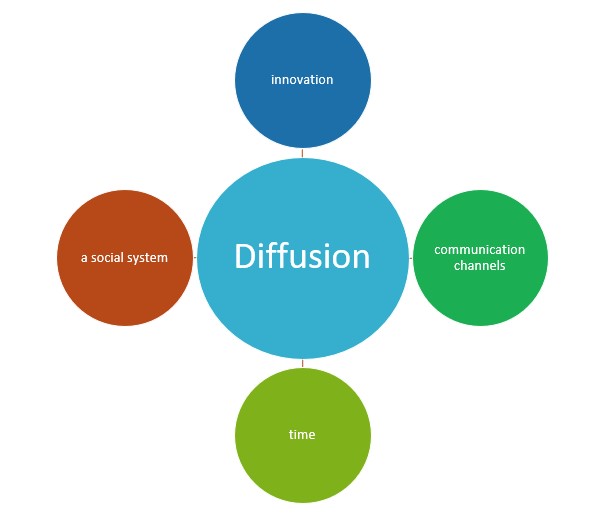
Diffusion of Innovation in Education
The Diffusion of Innovations theory, developed by Everett Rogers in 1962, is a widely recognized theory that explains how, why, and at what rate new ideas and technology spread through cultures. The theory suggests that the spread of a new idea or technology is a process that occurs over time and is influenced by several factors, including the characteristics of the innovation itself, the characteristics of the individuals and groups that adopt it, and the communication channels through which information about the innovation is transmitted.
Diffusion in Education
In the context of education and educational technology, Rogers’ theory can be used to understand how new teaching methods and technologies are adopted and implemented in schools and classrooms. The theory suggests that some teachers and schools will be more likely to adopt new technologies and teaching methods than others, depending on their characteristics and the characteristics of the innovation itself. For example, teachers who are more open to change and experimentation may be more likely to adopt new technology and teaching methods, while those who are more resistant to change may be less likely to do so.
In addition, the theory suggests that the way in which information about new teaching methods and technologies is communicated can also influence adoption rates. For example, if teachers receive information about new technology through personal communication with colleagues, they may be more likely to adopt it than if they receive the information through more formal channels, such as workshops or professional development sessions.

Types of People
According to Everett Rogers’ Diffusion of Innovations theory, there are five types of people in the adoption process of a new innovation:
- Innovators: These are the individuals who are the first to adopt a new innovation. They are typically a small group of people who are willing to take risks and are open to new ideas. They are also usually well-educated and have access to financial resources.
- Early Adopters: These individuals are the next group to adopt a new innovation. They are often opinion leaders in their communities and are respected by others. They are typically well-educated and have a strong desire to be up-to-date with the latest technology.
- Early Majority: These individuals adopt a new innovation after it has been proven successful by the early adopters. They are typically more cautious than the early adopters and want to see the innovation in action before they adopt it themselves.
- Late Majority: These individuals are slower to adopt a new innovation and often only do so after it has been widely adopted by others. They are typically more skeptical of new ideas and want more information before they adopt it.
-
Laggards: These individuals are the last to adopt a new innovation. They are typically resistant to change and are often older or less educated than the other adopter groups. They may have limited access to information about new innovations and are often skeptical of new ideas.
